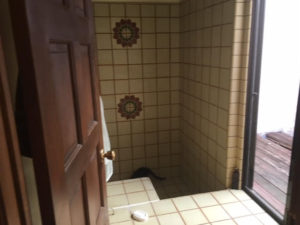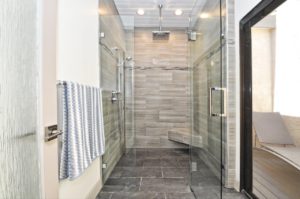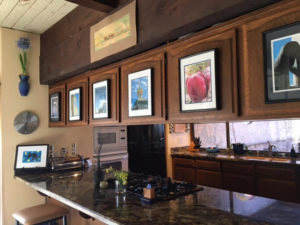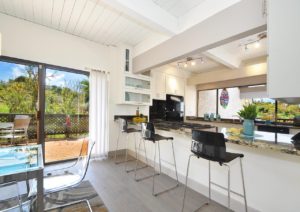Home Improvements can substantially increase the value of your home, but it is important to understand that most home improvements will not necessarily lead to an increase in the home value at least equal to the investment. Home Improvements, however, can definitely make your home easier to sell and make it sell much more quickly. An additional service that I provide which I believe is unique to real estate agents is managing the process of a renovation or updating of your home in preparation of listing the property.
According to a 2020 Annual Survey prepared by Remodeling Magazine (“© 2020 Hanley Wood, LLC. Reproduced by permission. Complete city data from the Remodeling 2019 Cost vs. Value Report can be downloaded free at www.costvsvalue.com.”), on average you can expect to recover the following percentage of your investment in your remodeling projects (Cost estimates and percentage recovery based on estimates for the Los Angeles area, which are generally higher than the national averages)::
Bathroom addition
mid-range, Add a full 6-by-8-foot bath over a crawl space with poured concrete walls. Include cultured-marble vanity top with molded sink; standard chrome faucets; 30-by-60-inch white fiberglass tub/shower with ceramic tile surround; single-lever temperature and pressure-balanced faucet; white low-profile toilet; general and spot lighting; electrical wiring to code; mirrored medicine cabinet; linen storage closet or cabinet; vinyl wallpaper; painted trim; and ceramic tile floor.
Cost : $61,076
Recovery Percent: 73.4%
upscale; Add new 100-square-foot master bath to existing master bedroom over crawlspace. Include 42×42-inch neo-angle shower with ceramic tile walls, accent strip, recessed shower caddy, body-spray fixtures, and frameless glass enclosure. Put in freestanding soaker tub with high-end faucets; stone countertop with two sinks; two mirrored medicine cabinets with lighting; a compartmentalized commode area with one-piece toilet; and a humidistat-controlled exhaust fan. Use larger matching ceramic tiles on the floor, laid on diagonal with ceramic tile base molding. Add general and spot lighting and waterproof shower fixture. Cabinetry has custom drawer base, wall cabinets. Extend HVAC. Electric in-floor heating.
Cost:$ 109,695
Recovery Percent: 72.0%
Bathroom Remodel:
mid-range; Update existing 5×7-foot bathroom. Replace all fixtures to include 30×60-inch porcelain-on-steel tub with 4×4-inch ceramic tile surround; new single-lever temperature and pressure-balanced shower control; standard white toilet; solid-surface vanity counter with integral sink; recessed medicine cabinet with light; ceramic tile floor; vinyl wallpaper
Cost: $25,996
Recovery Percent: 74.6%

Before

Upscale, Expand existing 35-square-foot bathroom to 100 sf within existing house footprint. Relocate all fixtures. Include 42×42-inch neo-angle shower with ceramic tile walls with accent strip, recessed shower caddy, body-spray fixtures, and frameless glass enclosure. Include freestanding soaker tub with high-end faucets; stone countertop with two sinks; two mirrored medicine cabinets with lighting; a compartmentalized commode area with one-piece toilet; and a humidistat-controlled exhaust fan. Use all color fixtures. Use larger matching ceramic tiles on the floor, laid on diagonal with ceramic tile base molding. Add general and spot lighting including waterproof shower fixture. Cabinetry has custom drawer base, wall cabinets. Extend HVAC. Electric in-floor heating.
Cost: $78,913
Recovery Percent: 71.9%
Major Kitchen Remodel:
Mid-range: Update outmoded 200-square-foot kitchen with functional layout of 30 linear feet of semi-custom wood cabinets, including 3×5-foot island; laminate counter tops; and standard double-tub stainless steel sink with standard single-lever faucet. Include energy efficient range, vented range hood, built-in microwave, dishwasher, garbage disposal, and custom lighting. Add new resilient flooring. Finish with painted walls, trim, and ceiling.
Cost: $77,767
Recovery Percent: 75.2%
upscale; Update outmoded 200-square-foot kitchen with 30 linear feet of top-of-the-line custom white cabinets with built-in sliding shelves and other interior accessories. Include stone countertops with imported ceramic- or glass-tile backsplash; built-in refrigerator, commercial-grade cooktop and vent hood, wall oven, and built-in microwave unit. Install high-end under mount sink with designer faucets and water filtration system. Add new general and task lighting, including low-voltage under cabinet lights. Install tile or similar flooring that looks like wood
Cost: $153,014
Recovery Percent: 61.9%

Before

After
Minor Kitchen Remodel: In functional but dated 200-square-foot kitchen with 30 linear feet of cabinetry and counter tops, leave cabinet boxes in place but replace fronts with new shaker-style wood panels and drawer fronts, including new hardware. Replace cooktop/oven range and slide-in refrigerator with new energy-efficient models. Replace laminate countertops; install midpriced sink and faucet. Add new resilient flooring. Finish with painted walls, trim, and ceiling
Cost: $26,993
Recovery Percent: 95.1%
Vinyl Siding replacement: Replace 1,250 square feet of existing siding with new vinyl siding installed to manufacturer’s specifications. Include factory trim at all openings and corners
Cost: $18,044
Recovery Percent: 81.3%
Window Replacement-Vinyl:Replace 10 existing 3×5-foot double-hung windows with insulated, low-E, simulated-divided-light vinyl windows with a custom-color exterior finish. Trim exterior to match existing; do not disturb existing interior trim.
Cost: $19,836
Recovery Percent: 76.9%
Wood: Replace 10 existing 3×5-foot double-hung windows with insulated, low-E, simulated-divided-light wood windows. Interior finish of stained hardwood; exterior finish of custom-color aluminum cladding. Trim exterior to match existing; do not disturb existing interior trim
Cost: $12,914
Recovery Percent: $100.7%
Master suite addition:
Midrange, Add 24×16-foot master bedroom suite over crawlspace. Include walk-in closet/dressing area, freestanding soaker tub, separate 3×4-foot ceramic tile shower, and double-bowl vanity with solid-surface countertop. Carpet the bedroom floor; put tile in bath. Paint walls, ceiling, and trim. Install general and spot lighting, exhaust fan
Cost: $167,440
Recovery Percent: 73.7%
Upscale,Add 32×20-foot master bedroom suite over crawlspace. Add spacious sleeping area with lounging/sitting area adjacent to large master bath. Include custom bookcases and built-in storage with millwork details; high-end gas fireplace with stone hearth and custom mantle; and walk-in closet/dressing area with natural light, mirrors, and linen
Cost: $340,894
Recovery Percent: 66.6%
Roof replacement, asphalt shingles:Remove and dispose of existing roofing to bare wood sheathing. Install 30 squares of min. 235-lb. fiberglass asphalt shingles (min.25-year warranty) with new 30-lb. felt (or equivalent synthetic)underlayment, galvanized drip edge, and mill-finish aluminum flashing. Assume a rectangular hip roof; custom flashing at two average-size skylights; and custom cap treatment at vented ridge
Cost: $30,243
Recovery Percent: 80.9%
Deck Addition, composite: Add 16×20-foot deck using pressure-treated joists supported by 4×4-inch posts anchored to concrete piers. Install composite deck material in a simple linear pattern. Include built-in bench and planter of the same decking material. Include stairs, assuming three steps to grade. Provide a complete railing using a matching system made of the same composite as the decking material.
Cost: $23,911
Recovery Percent: 84.4%
In our experience, a good kitchen remodel is the best return on investment. The complete 2020 survey of cost versus recovery analysis as well as cost estimates for typical home improvements can be found at https://www.remodeling.hw.net/cost-vs-value/2020/pacific/los-angeles-ca/
The following is a minor upscale kitchen remodel which we have done to my personal residence in Palos Verdes Estates, California, which cost approx. $25,000 . The work included new granite counters, new kitchen sink and fixtures, new limestone backsplash, refinished cabinets, new stainless steel refrigerator, and enlarged and expanded storage in center island.
Improvements to the front of the house can have a strong positive impact on the property’s curb appeal which can greatly improve a buyer’s initial impression of your home, thus leading to a higher sales price and a shorter sales period.
I have done several significant renovations for clients, an example of which can be seen at the following link: Renovation of My recent Listing
For information about the Federal Energy Credit for Qualifying Home Improvements, go to Income Tax Issues
HERE ARE SOME ARTICLES YOU SHOULD READ BEFORE HIRING A CONTRACTOR.
Home Improvement Contracts/Putting the Pieces Together
Ten Tips for Making Sure Your Contractor Measures Up
Homeowners Guide to Preventing Mechanics Liens
Following are some additional tips in dealing with contractors:
1) Up-Front Payments: Initial deposits are negotiable. California law requires that the amount of the down payment for any home improvement contract (except for swimming pools) may not exceed $1,000 or 10 percent of the contract price (excluding finance charges), whichever is less. The down payment for a swimming pool shall not exceed $200 or two percent of the contract price (excluding finance charges), whichever is less. Most good contractors maintain open credit accounts with their suppliers and don’t require payment up front for materials.
2) Progress Payments: Negotiate that the contractor shall provide you with a subcontractor unconditional lien release for all payments to subcontractors to confirm that the subcontractors have been paid and that they will not lien your home with a mechanics lien for non-payment by the contractor. Even if you have paid the contractor for the full amount of the contract, if he has not paid the subcontractors, they can demand payment from you. Legally, you would have recourse against the contractor, however many times this situation arises because of financial difficulties by the contractor which ultimately leads to the contractor’s bankruptcy, and the homeowner is left holding the bag. You can protect yourself from unwarranted liens by identifying subcontractors and materials suppliers in your written contract and getting signed conditional lien releases from the subcontractors and suppliers. After you’ve made a payment for work or materials, get signed unconditional lien releases.
Another preventive step is to file a Notice of Completion with the County Recorder’s office after work on your project is completed. This notice reduces the amount of time a contractor, subcontractor or materials supplier can file a mechanic’s lien against your home.
3) Make sure that you negotiate the progress payments to the contractor payable at the time of actual observable milestones for the project. For instance, pay the contractor the cost of all plumbing work after certain observable milestones such as completion of rough plumbing or completion of fixture installation, with a portion of the contractors budgeted overhead and profit as a percentage of the cost of the work completed, less a “retainage”, usually 10%. Other milestones may be completion of framing, completion of electrical work, completion of drywall installation, completion of painting, etc. The important point to remember is that you want the contractor to have money invested in the job at any point in the project so that if they stop performing, that you have the value of work in place at least equal to what you have paid to the contractor, and that you have proof from the contractor that any subcontractors have been paid for work completed related to the milestone payments. Another solution is to pay your contractor by joint checks. When the contractor presents you with a bill for materials or labor, make the check to both the contractor and the supplier or subcontractor. Never let your payments get ahead of the contractor’s work, and make sure the contract provides for a “retention” – a percentage of each payment or of the total job, ordinarily 10 percent, which you retain until the job is completed.
4) Make sure you do your due diligence in investigating the contractor before signing the contract with the contractor. This should include the following:
a) Visit the contractor in his office. If he doesn’t have an office, this may mean that he doesn’t have as strong a financial commitment to his business
b) Beware if the contractor says the work doesn’t require a permit. Any work requiring substantial foundation work, plumbing, electrical or work requiring the removal of a wall or work where it is questionable whether a structural engineer is needed, usually requires a permit. Although you may save money in not getting the permit, the permit process also provides inspections by the city to make sure the work is being done in accordance with building codes to protect you from shoddy work. In addition, if an inspector sees that work is being done without a permit, they will shut your job down and may require penalty fees to obtain a permit.
c) Make sure the contract is extremely detailed as to what work is to be completed. Verbal commitments from the contractor is not enough.
d) Try to require the contractor to obtain multiple bids from subcontractors for work to be performed to ensure you are receiving the most value for the money.
e) Try to avoid a “cost plus” contract where the contractor is paid for his costs plus a certain percentage for his overhead and profit. Try to negotiate a fixed price contract, and if this is not possible, at least get a “maximum guaranteed price” included in the contract.
f) Try to keep track of all materials delivered to the site and the vendors delivering the material, and when requested to make progress payments to the contractor, make sure you get paid invoices from the material vendors showing that they have been paid. If the contractor says that he needs payment from you to pay his vendors, make out your check to both the contractor and the material supplier.
g) Ask how long the contractor has been in business , how many employees he has, and how many projects like this he has done. Talk to at least 3 references for jobs that the contractor has done similar to yours.
h) Make sure that the contractor is properly licensed by in the state you are located in (see http://www.cslb.ca.gov/ for the state of California and https://www2.cslb.ca.gov/OnlineServices/CheckLicenseII/CheckLicense.aspx for the status of his license as well if any complaints have been filed against him by the state licensing board as well as the local Better Business Bureau.
i) Ask for a copy of his workman’s compensation insurance policy as well as other insurance required by the state, such as liability insurance policies.
j) Try to negotiate time deadlines for completion of the work, with penalties for non-performance. If you want to include this protection, the contractor will normally also want included a provision for a bonus if the job is completed prior to the deadline. If this is not possible, still put in the contract the date of estimated completion and the right of the homeowner to cancel the contract for non-timely performance, but this would include the obligation of the homeowner to pay the contractor for the value of work completed to date
South Bay Los Angeles Contractors, Tradesmen and Other Service Providers:
The following is a list of contractors, tradesmen, and other service providers in the South Bay of Los Angeles that I would recommend. I have either personally worked with them, or they have been highly recommended by my clients:
Painters
1)Kevin Kim – 213-210-3369 –
2)Ike Harris W & W Contractors 323-309-5524
Electricians
1)Christmas Electric – Tom Christmas – 310-466-6581
2)Dynamic Electric – Edgar- 310- 428-4047
3)Stern Electric – (310) 530-0727
Plumbing
1)Kurt Zimmerman – 310-991-6703
2)Tom Farrell – 310-433-5495
3)George Bender Plumbing – 310-809-3867
4)Randy´s Plumbing – (310) 320-7500
5)Bob & Marc Plumbing & Heat – (310) 970-1099
Handyman
1)Don Dolbec – 310- 316-2373
2)Anthony Skelly – 310-930-0656
3)Chris Regan 310-939-9015
4)Gary Hyde, Computer and Phone Lines 310-701-0777
Interior Design / Contractor/ Architects
1)Charlotte Masten – Interior Designer – Kitchens & Baths310-628-2788
2)Tim Gavin – Custom Stone Work Interior and Exterior – 310-628-2788
3)Ralph Ferrin – Custom Mantels and Cabinets – 310-328-3021
4)Gilbert Siliezar – Custom Cabinets – 714-334-5089
5)De Lorenzo Marble & Tile Inc. – Granite Counters, Marbleand Tile work 310-328-8000
6)Bob Hayes – Custom Tile Installation – 310-995-8453
7)Beechwood Cabinets – Mark Rhodes – 310-378-6312
8)Oliver Twist Chimney Sweep – 562-595-5122
9)London Chimney Sweep – 310-478-1033
10)Wood Floor Installation and Refinishing – Julio Monterroso -310-200-1472
11)One Stop Door Stop – Windows and Doors – 310-373-3483
12)White Castle Construction – Foundation Work and Seismic Retrofit 323-937-1660
13)West Pacific Insulation- 310-663-4762
14)Contractor – The J. Alexander Company, Inc. – John Schoenfeld ? 310-375-9731
15)Contractor:Karl Baru – 760-716-6918
16)Contractor – Jim Reinhardt – 310-325-9218
17)Contractor – Artwork Remodeling & Refinishing – Art Dotson -310-782-6346-www.artworkremodeling.com
The following are some useful links:
Advice for Remodeling Kitchens and Bathrooms
Cost Estimator Tool for making Home Improvement
Links for home repairs:
http://www.homeinspectorlocator.com/resources/Costtorepair.htm
http://www.costhelper.com/cost/home-garden/termite-control.html
http://www.costhelper.com/cost/home-garden/mold-remediation.html


